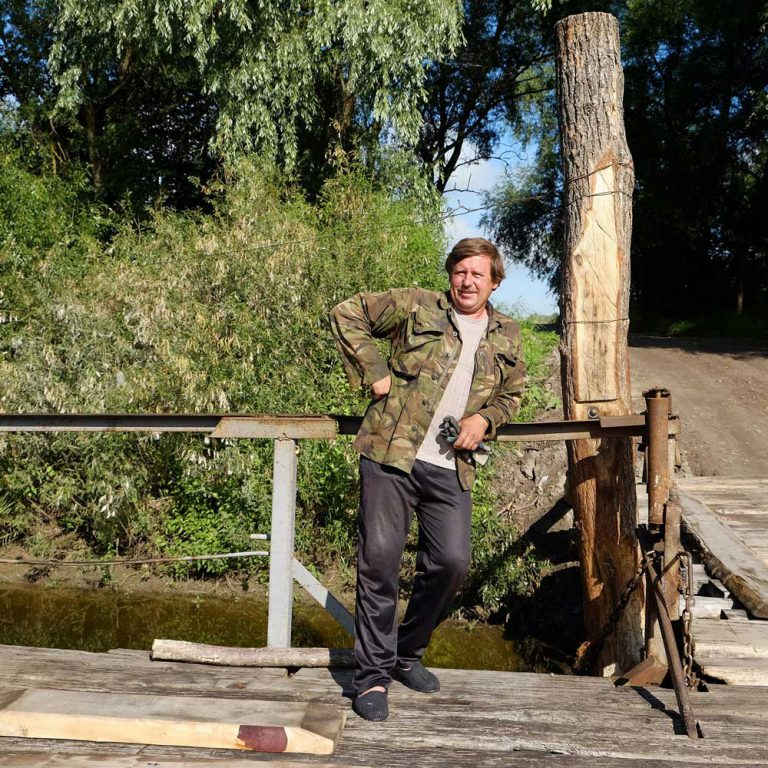The Desna River – is one of the biggest rivers in Ukraine. There are a lot of settlements on its shores, but there are not so many ferries, which connect these settlements. Ferries are in Desnianske, Redychiv and Mesyn, and, further downstream, in Sosnytsia and Makoshyne. What is more, there is a pontoon ferry in Byryne and Maksaky. It’s interesting, that these ferries are made from wood, as distinct from ferries on the Dniester (read our article about ferries on the Dniester), which are made from metal.
Ferries are still used every day to get to cities, market or to somewhere else faster and not to cast a compass over bridges. For example, there is a road Luhove – Shostka. You need to ride about 48 kilometers to get out from Mesyn. But there is a quicker way – to pass over the Desna River by ferry and go an alternative way.
Mesyn ferry
Mesyn ferry has been working for about 80 years. It consists from two baidaks (river pram 30-60 meters in a length – author’s note), connected with each other. They used to use wooden baidaks, but now they use metal ones. These baidaks were braced and greased with resin to prevent a leakage. The river’s flow pushes to one side, therefore pushes ferry to the shore. A ferryman doesn’t make a great effort during handling, because the flow pushes the ferry by itself.
Once upon a time, Mesyn ferry shipped mostly cows to pastures and now fishermen and tourists come here.
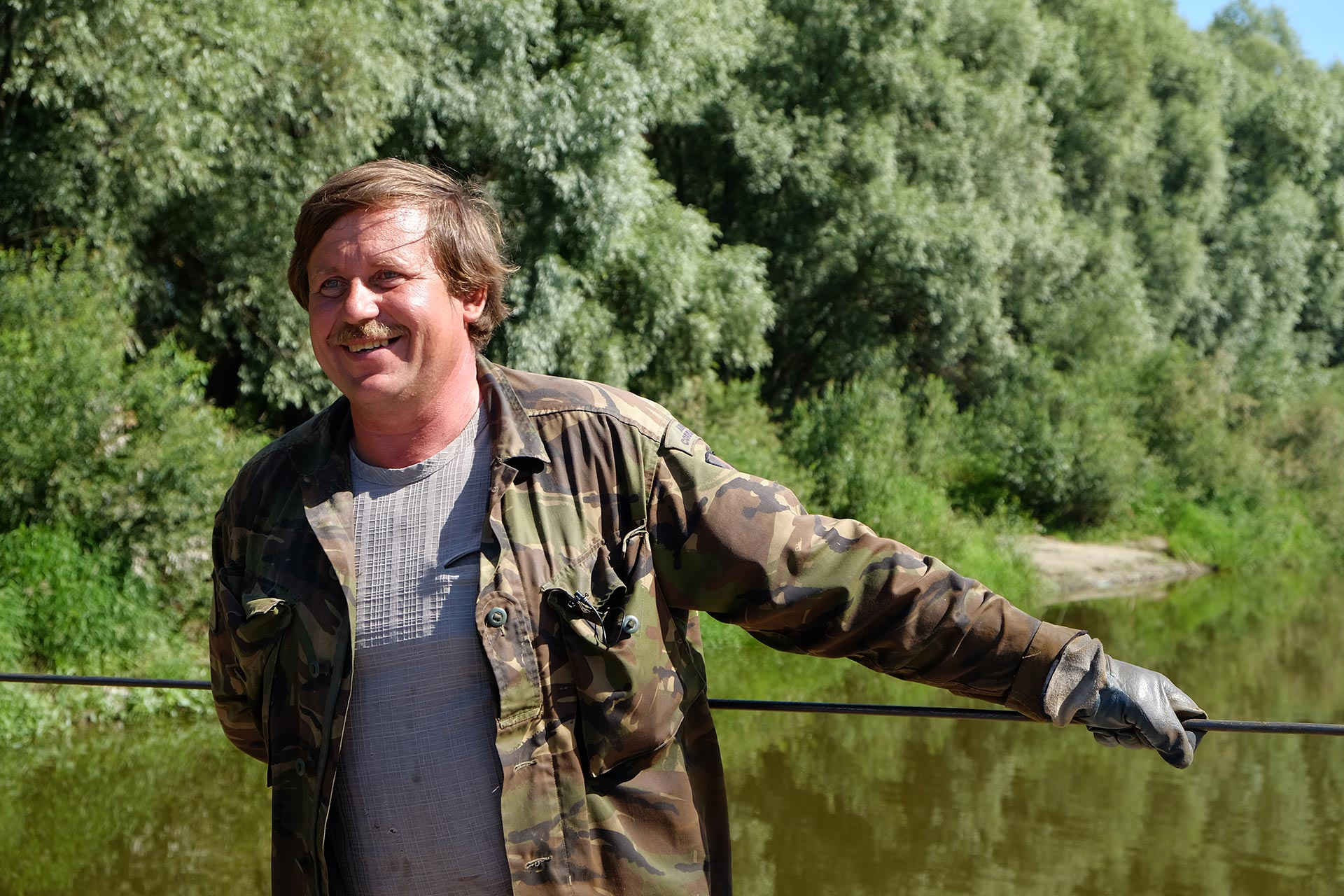
Serhiy
Serhii Dudko has been working as a ferryman in Sosnytsia for 27 years. In the 1990s no one had looked after a ferry, as it could float by itself and everything had been chaotic. And then they had decided to get a crew of young boys with willingness to work. It’s how Serhii began to learn a new trade, as he had worked as a house painter before. He is the only left from the first crew. He says that he became a ferryman because he needed any work. But with time he used to this trade and now he can’t imagine his life without the ferry. He has been rented it from a community – earlier it had been kolhosp’s property:
– This property is public. When kolhosps had been falling apart, all those monopolies decided not to buck the ferry, but to give it on a balance of a rural council. They allocated a property, say, ferry, combine, tractor, you know. At that time they announced a competition for a ferry – letters, converts, safe; it was such a serious for us, terrible. So we won the competition.
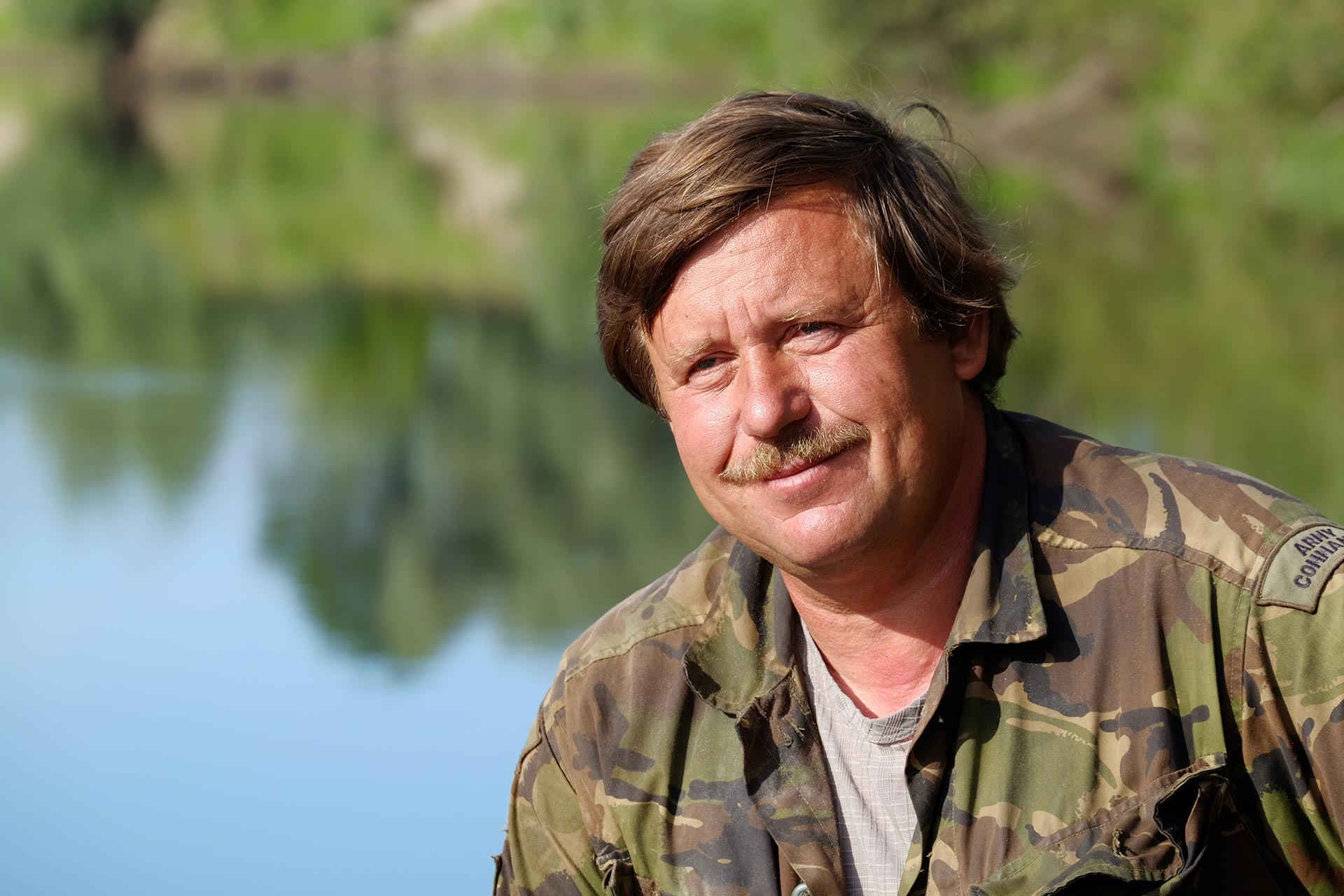
Nowadays Serhii isn’t alone on the ferry, he has a workmate:
– We are if more than one. There are two of us, yes. Me and the workmate. So there’s that.
They relieve each other every two days. They work regardless of holidays, weekends or bad weather. There is a timetable for a day, but Emergency Services can go at night, so the ferryman has to be always ready to work:
– Once, when I was on shift, the day was pleasant, normal cars passed and that’s all, I came home and an ambulance called me, that I need to ship them. Okay, I came, and I went to sleep around 1:30 and again I had a call – there are patients, it was necessary to ship. And again I shipped an ambulance at 4:00 a.m., then I was lying in the car till the second shift started.
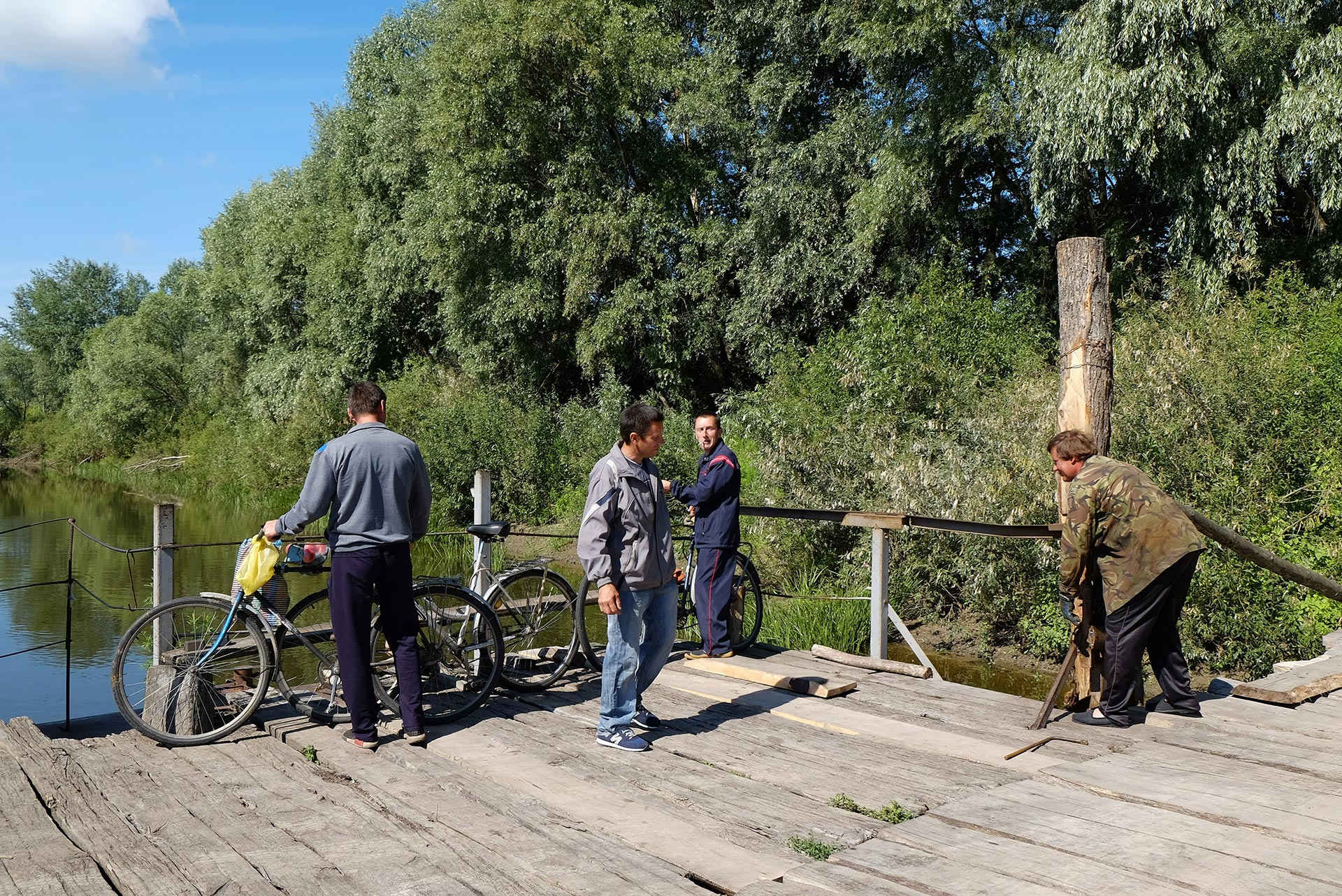
The ferry works every day, till the Desna River freezes over. Then a special pass for cars is created and they can pass over the river on ice. That way, the ferrymen may not work until spring. But, if ice thickness isn’t enough to sustain a car, workmates make ice-holes for the ferry’s way.
When there is slosh (a small loose ice as a mush that appears before ice formation – author’s note), they stretch a rope over the Desna River, fix wooden blocks on it and slosh freezes on them. Thus and so, ferrymen maintain ice-holes and fend the ferry off slosh.
Serhii has lots of work. Every day has its own specific of shipping. The largest number of people uses the ferry to get a temple – on religious holidays of Intercession of the Theotokos and Apple Feast of the Saviour. On those days it’s difficult to find some time for rest. For example, on Saturday first passengers come early, because they need to go to the market and trade. Then a stream of people decreases till 10 a.m.:
– We work till 5 p.m. on Saturday, everything is closed at that hour. And everybody sleeps on Sunday morning. On weekdays we work all day. Mainly farmers come, today a whole car of famers came. If something happens, an agricolist or an engineer shuttle.
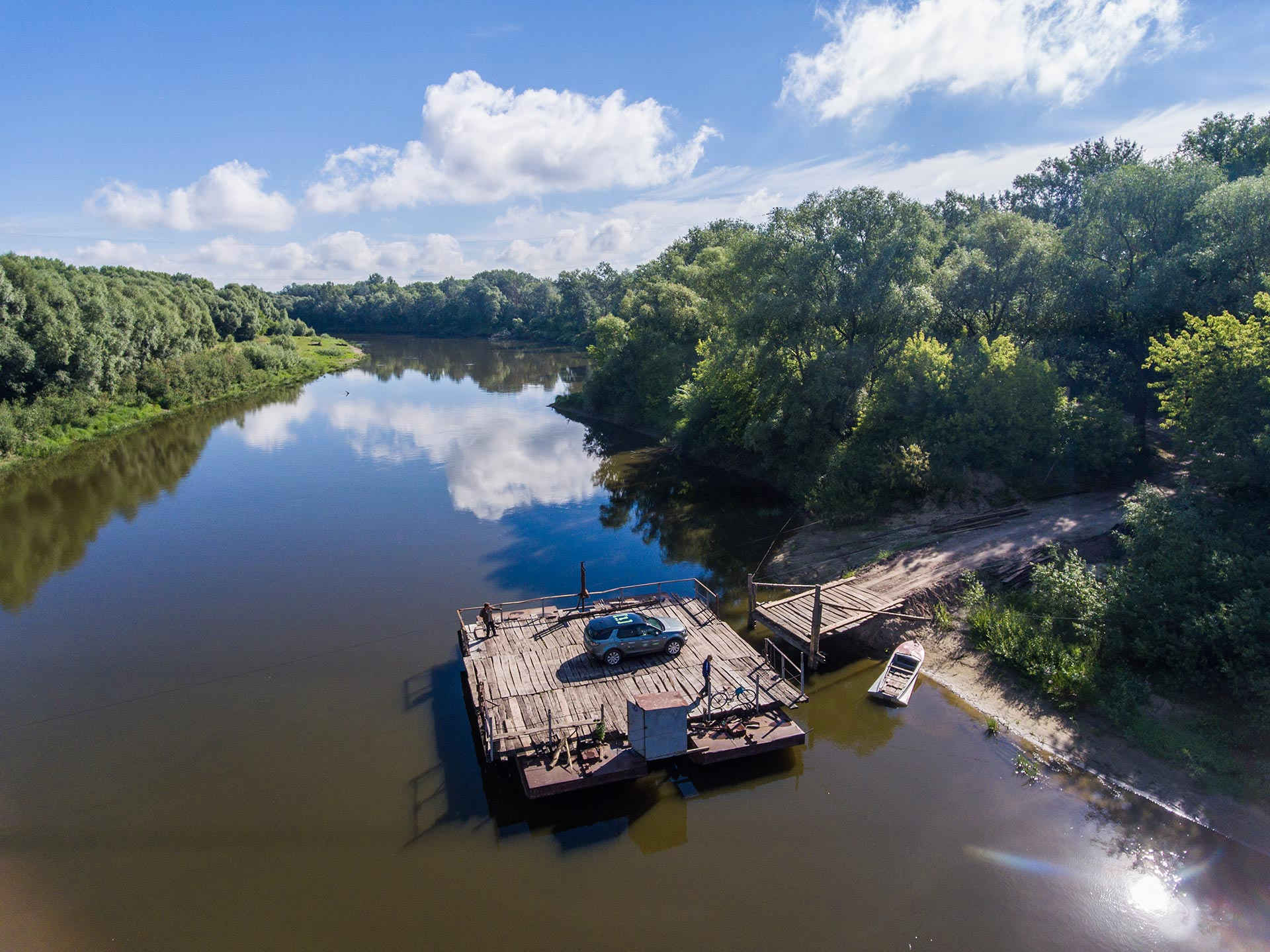
But, even if there is only one person who wants to pass over the river, the ferryman won’t turn down him of her. Every passenger is important for the ferryman:
– I’m not as global as the government. Even a hundred or two hundred people mean nothing for it, and here you have to ship only one person. Only a granny come – okay, I can ship her in five minutes, in ten minutes… I mean, well, to be unashamed a little.
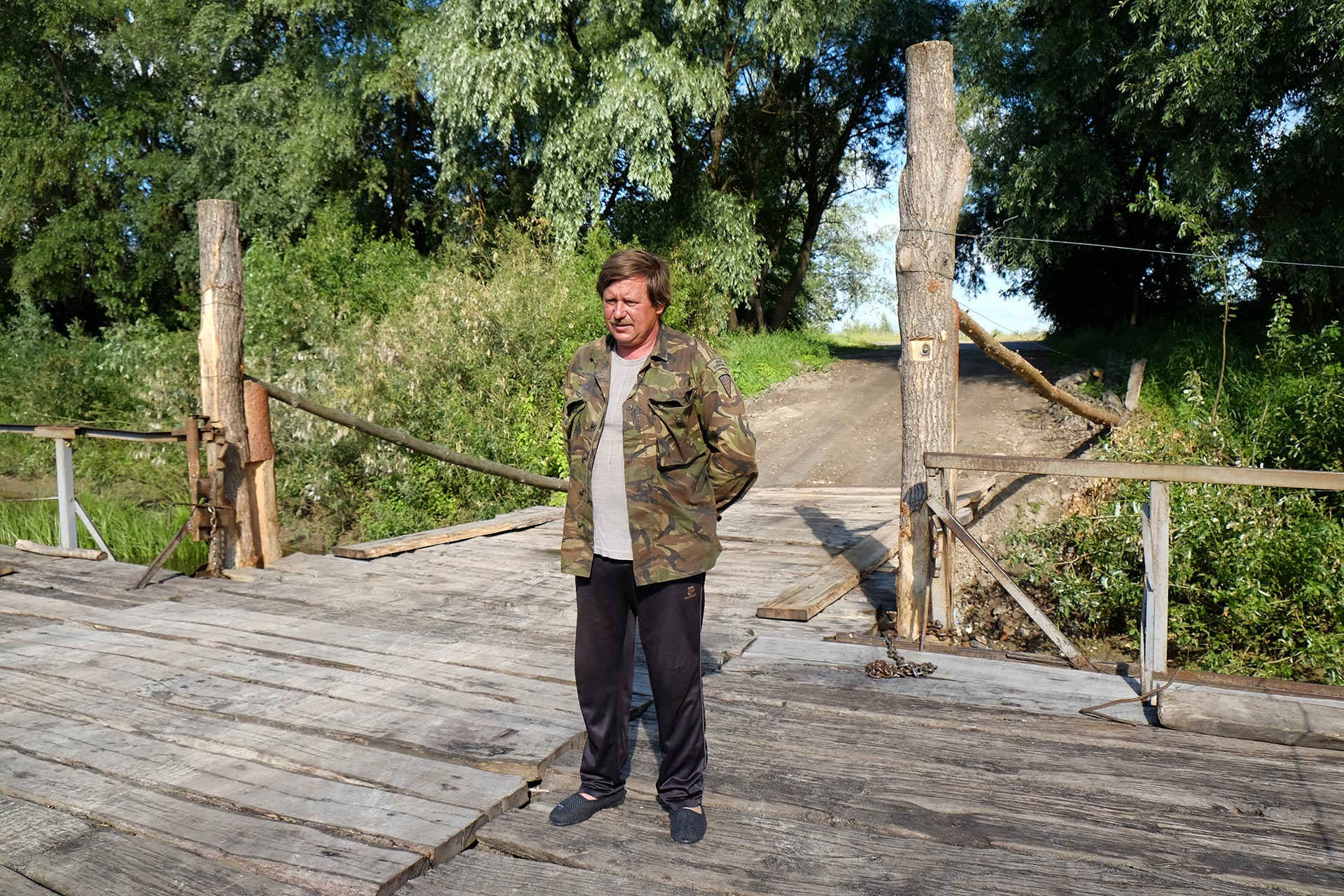
Ferry’s price policy is very democratic. Locals, as it were, have a constant discount and those, who can’t pay, can pass over by the ferry for free:
– There is a rule of payment. All passengers I ship are divided into two categories. First is the local residents of Pekariv’s rural council. There are four villages in this council. So local residents pay 50 percent and I let pedestrians and bikers, if they want to save money, no worries. They can use the ferry for free.
There’s always work to do on the ferry, apart from shipping, – it needs to repair or improve something:
– I have an electric drill in my car, so I’d tight a board, this is a little sticky. So I do something like this. There is something that needs repairing…
Serhii has shipped whatnot: trucks, tractors. Before now they’d shipped by the ferry cows to pastures. They corralled a flink on the ferry, closed bolts and shipped to the other bank.
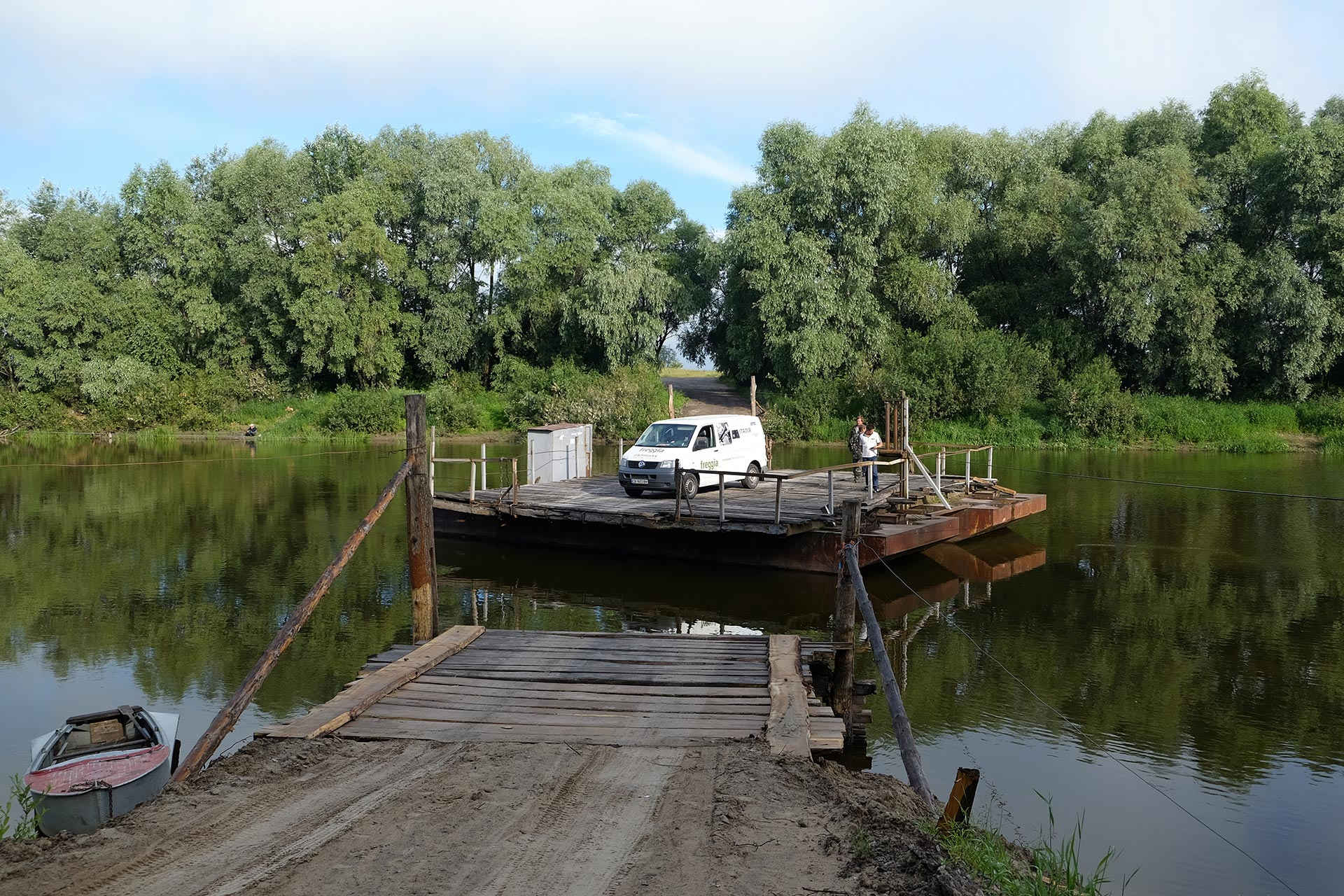
Ancient ferry
Sosnytsia’s ferry looks the same as in 1984. But this ferry had existed here long before the formation of the Soviet Union:
– The concept “ferry” exists till there are some people who remember this concept.
Before now the ferry was made from wooden boards, which were smaller in size. Their size was enough to contain a cart. Serhii says about changes in appearance of this ferry with time:
– During last hundred years we replaced wooden beams to metal and hanged a rod (a common name of metal-rolling round wire – author’s note) instead of a hemp rope. And now we’re planning even to fix an engine during next hundred years.
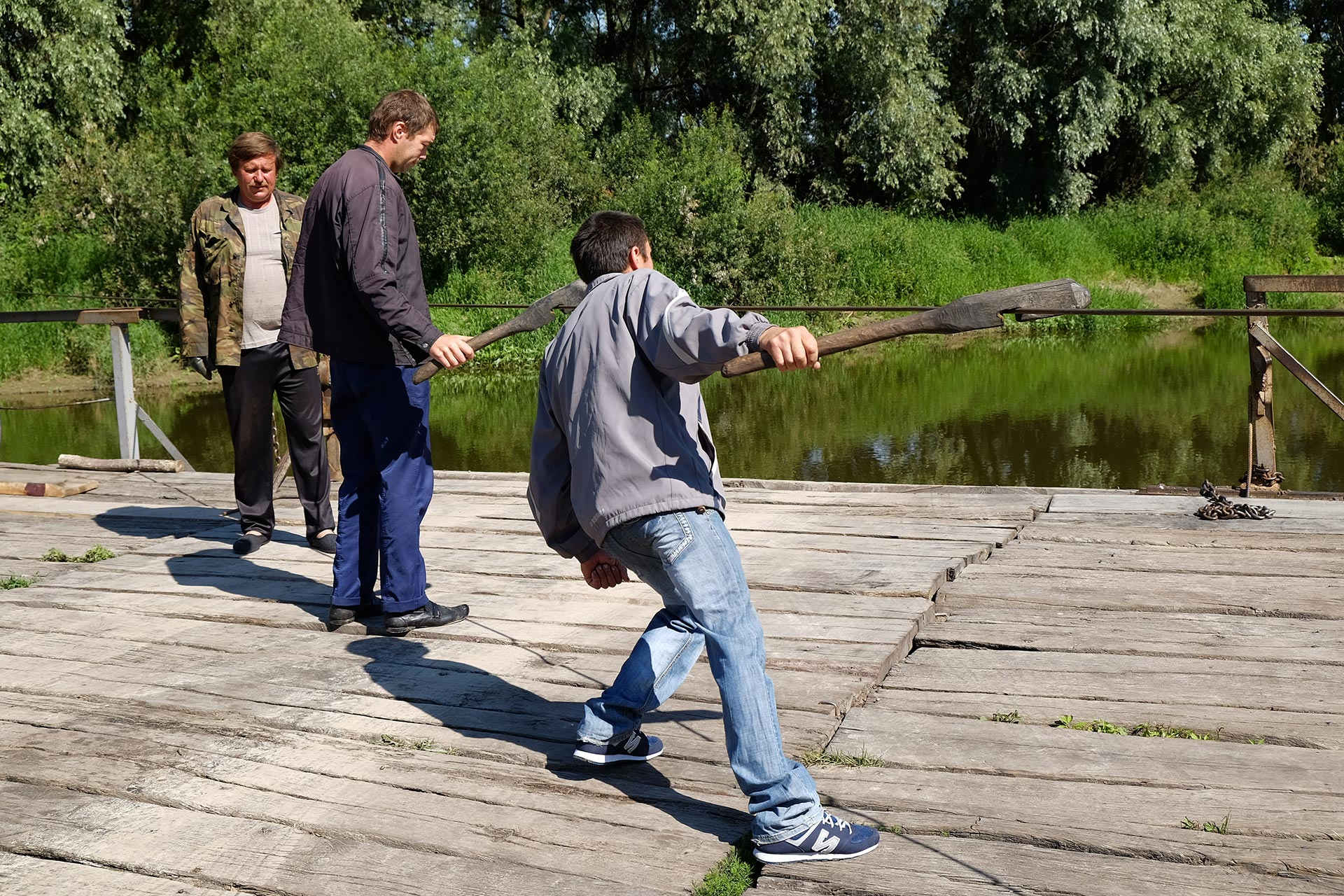
The ferry begins to move by means of ferryman’s movements with a beetle (wooden cane with special flute – ed.note) on the rope. Sometimes you can to do it without a beetle, only with work gloves. Serhii connects the beetle with the rope, puts it behinds his back and presses with his weight. Most often, he uses the beetle when there are some problems with movement and he needs to make efforts, for example, at winter:
– I don’t just steer the ferry, I need to pull it. I need to guide it, retain, set free… All in all, you rub the rope with the beetle, pull and it turns rope over, so we ship. And if you want to land you need to make piles to converge.
It’s easy to ship the ferry when the weather is bad. Rain drops damp the rope as a lubricant and you need to make less effort and it’s easier to make the ferry move.
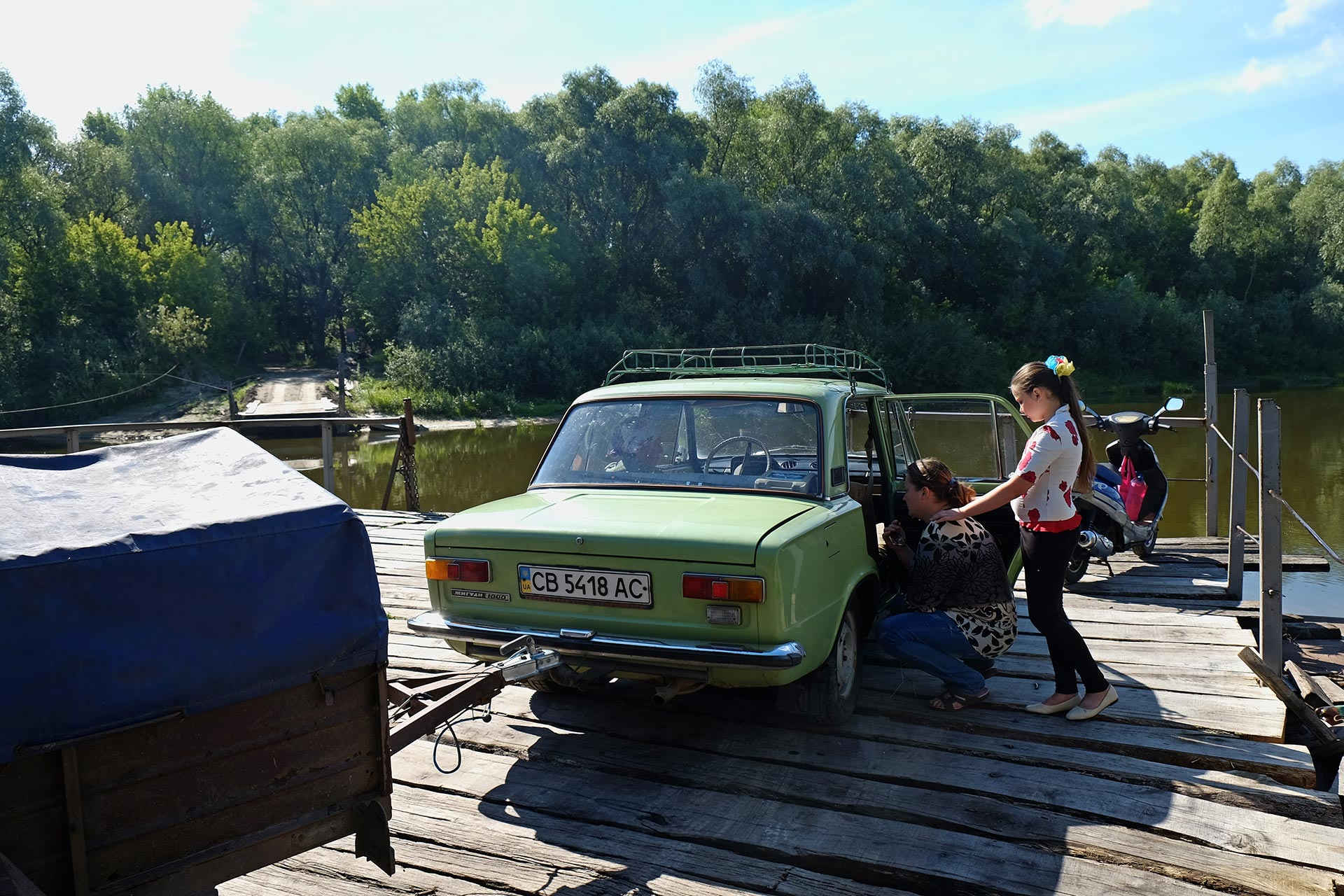
Ferryman must always be attentive. He needs to direct drivers to drive into ferry. If they park incorrectly, they can fall into the water:
– Well, I think that ferryman doesn’t have a time to be glued to a smartphone. He must to work.
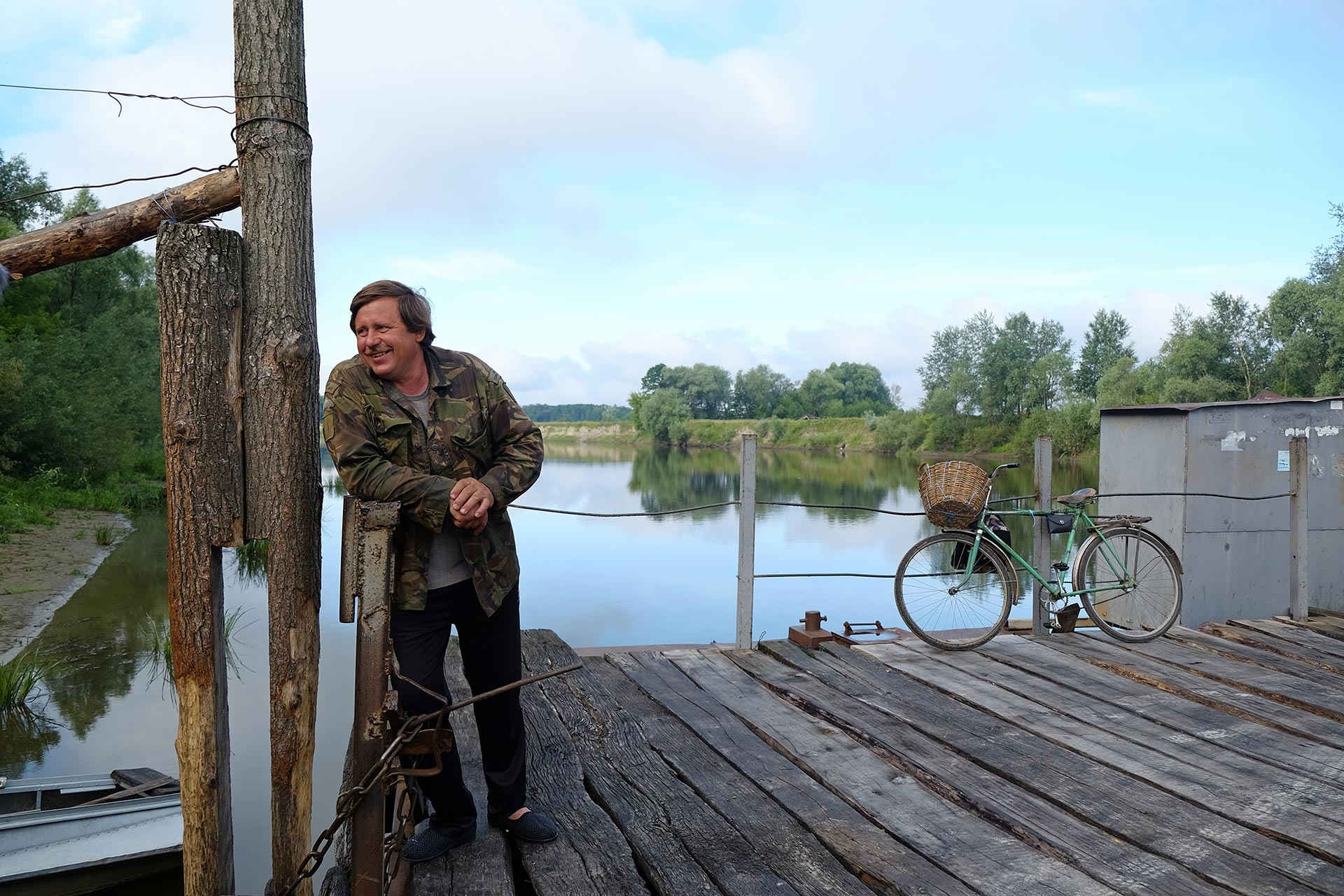
Serhii hadn’t been trained as a ferryman, he had been learning during the work. At first he felt a tip too shy to speak in a sharp tone with drivers if they did something wrong. But now he already knows what’s best: when he needs to raise voice and when just give a nod so that the driver slowly starts off and drive:
– Now I know how to work by applying a rule of thumb. So everything becomes known in process.
How we were shooting
The part two of Sivershchyna, in which we visit several palaces of this region – Kachanivka and Galagan’s palace, visit Kruty Heroes Memorial and meet with Assyrians in Nizhyn, listen to bayan-player in Krolevets, visit the Apple-colony and accidentally get on pass-out parade and, finally, visit some ferries of which we’ll publish a story soon.

